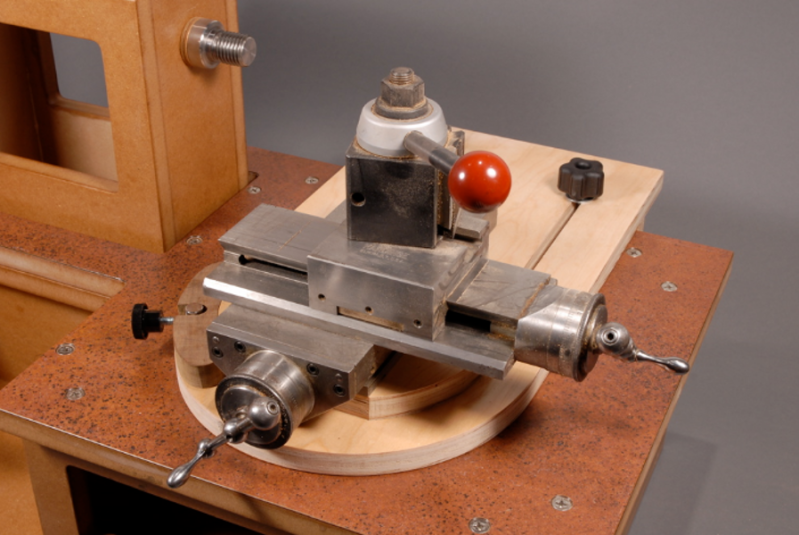The basics of a skill may take a long time to master, but there is always something else to learn about regardless of the craft. Building a piece of fine furniture out of hardwood or being able to weld together a bicycle from scratch are all impressive feats, but there are fine details that you’ll only learn about once you get to this level of craftsmanship. One such tool that will help with these intricacies is known as the rose engine lathe.
This tool is based on an average lathe, typically used for creating round things out of stock which is not round. A rose engine lathe has a set of cams on it as well which allow the lathe to create intricate patterns in the material it’s working with, such as flower type patterns or intricate spirals. One of the most famous implementations of this method was on the Fabergé eggs. While this might make it sound overly complex, this how-to actually shows you how to build your own rose engine lathe out of a piece of MDF and a large number of miscellaneous pieces of hardware.
We recently featured another build which performs a similar function called engine turning. While similar, this is the method responsible for creating overlapping spirals on a piece of metal. Either way, both projects are sure to spice up your metal or woodworking endeavors.
Thanks to [PWalsh] for the tip!















I will give you a dollar if you can find a better example of rose engine engraving than high as hell expensive chicken tchotchkies. This was a way of making hard to fake engraving in currency and legal docs.
Sounds interesting, but I can’t find an example of what you are talking about. Do you have a link?
https://en.wikipedia.org/wiki/Guilloch%C3%A9
Video link: https://www.youtube.com/watch?v=r9JRhcynHn4
Actual engine turning is this, previous article was spotting- not engine turning. Both being rather obscure they are often confused.
Engine turning, this, in short, is a specialized lathe with syncronous cam following function for a cutter to cut based on a moving headstock, that pivots side to side and sometimes forward to back that creates regular geometric patterns on your work piece.
Engine turning is also more comprehensively referred to as guilloche, because there is also a variant that does flat objects in straight line engraving as well, and technically that is not turning.
Engine turning was indeed a pastime of royalty and the finest craftsmen in the medieval era. The spirographic lines in the margins of u.s. currency were created on a rose engine (aka a guilloche or engine turning lathe) to make it much more difficult to copy by counterfeiters.
Decorative turning lathes made by Holtzapffel were often called parlour lathes. Wealthy families had them in their parlours and would hire operators to entertain at parties, turning out fancy work to amuse and amaze their guests.
It’s a common error that Babbage had problems building his Difference Engine and other computing devices because at the time it wasn’t possible to do machine work to the degree of precision needed.
The Holtzapffel lathes prove that’s not true. They were in production long before, during and long after Babbage was building his computers. He just didn’t know he should’ve paid a visit to 64 Charing Cross to enquire about having some precision parts made.
That’s not the point why Babbage was unable to get the parts. High precision was possible, but not high repeatability.
One guy could turn out all the parts on the same lathe to the same tolerances and dimensions – provided the lathe and the tools didn’t wear out considerably – but since there were thousands of parts it would have taken them forever to do that. Parts, measurements and tolerances weren’t standardized back then, so if you sent your drawings to a number of different workshops, they’d all return you with parts that didn’t fit to each other. The prevailing attitude was simply to make so many of anything that you could sort them into lots according to fit, and then build machines out of each lot – but that meant their parts weren’t interchangeable, and spare parts would have to be specially manufactured for each machine.
The government cut funding for the project in 1842. Ironically, Whitworth had come up with the first national standard for screw threads in 1841.
You can actually get some pretty cool patterns just by running a little mini lathe too fast and letting it chatter.
There’s the Homer Simpson pattern… https://www.youtube.com/watch?v=QVuU2YCwHjw
“Engine turning” was used to “carve” relatively complex patterns on mass-produced British ceramics in the late 18th-19th Centuries. There’s fascinating video on a the topic at: https://www.youtube.com/watch?v=n-7twF5_chU
I am a Toolmaker by trade and would very much like to get hold of plans for the Rose Machine to build myself one of these. Any suggestions?
Louis, the genuine ones run into the thousands of dollars, but you can built yourself an aluminium one I am enclosing the url links to some of the sites where you will get ideas. The last url actually includes the plans for a wooden one.
https://www.homemadetools.net/homemade-rose-engine
http://www.ornamentalroseengine.com/download/rre/index.htm